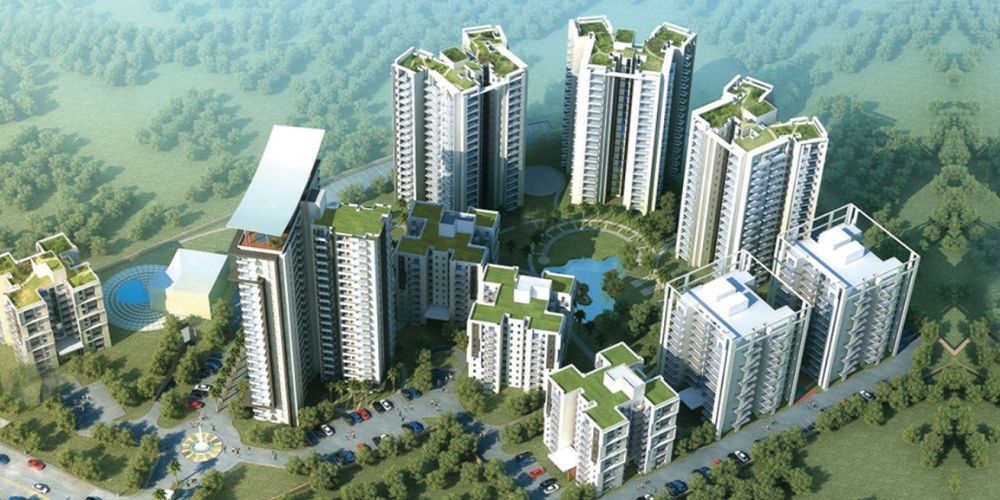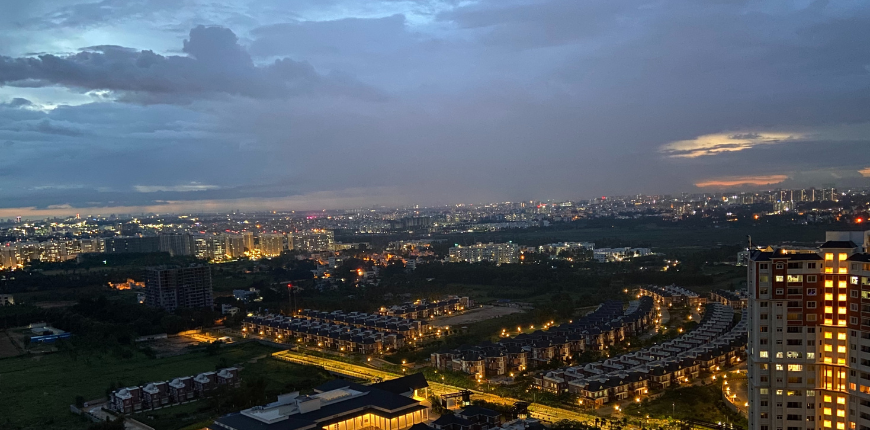
Why Are Homes Selling Faster in Delhi: If you’ve been browsing property websites lately or chatting with real estate pros, you might’ve noticed one thing loud and clear: homes are selling faster in Delhi-NCR than in Mumbai or Bengaluru. Surprised? You’re not alone.
This shift has buyers, investors, and even developers taking notice. Why is Delhi outpacing two of India’s strongest metro cities in the real estate game? What’s driving this buying frenzy? And what does it mean for your next big property decision? In this article, we’ll break it all down—from pricing trends to infrastructure growth to policy tailwinds—with clear examples, expert opinions, and buyer-focused advice. Whether you’re a beginner or seasoned investor, you’ll walk away with real insights you can act on.
Why Are Homes Selling Faster in Delhi
Delhi-NCR has emerged as India’s fastest-moving real estate market in 2025, thanks to strong luxury housing demand, rapid price growth, robust infrastructure, and buyer-friendly policies. Compared to Mumbai and Bengaluru, Delhi is offering better returns, smoother project execution, and faster buyer conversion. For buyers and investors alike, this could be the best time in years to invest in the region. The numbers—and the narrative—clearly support that Delhi is winning this race.
| Factor | Delhi-NCR | Mumbai | Bengaluru |
|---|---|---|---|
| Avg. Price per Sq Ft (Q1 2025) | ₹5,535/sq ft | ₹8,532/sq ft | ₹7,052/sq ft |
| Price Growth (YoY, H1 2025) | 14–27% | 8–11% | 12–14% |
| Sales in ₹1 Cr+ Segment | ~81% | ~36% | ~70% |
| Popular Micro-Markets | Gurugram, Noida, Dwarka Expressway | Thane, Andheri, Navi Mumbai | Whitefield, Sarjapur, Hebbal |
| Inventory Absorption Rate | High (faster turnover) | Moderate to low | High |
| Infrastructure Development | Rapid and widespread | Slower due to congestion | Focused on IT corridors |
| Key Official Sources | Knight Frank, JLL, CREDAI, RBI | RERA, MagicBricks, Anarock | CBRE, PropTiger, India Today Property |
What’s Fueling the Boom in Delhi-NCR Real Estate?
Let’s unpack the big drivers behind Delhi’s rapid-fire home sales and why it’s suddenly leading India’s property race.
1. Delhi’s Luxury Housing Boom
According to Knight Frank’s H1 2025 report, a massive 81% of all home sales in Delhi-NCR were in the ₹1 crore and above segment. That’s a sharp contrast to Mumbai (36%) and Bengaluru (70%).
This data reveals a significant shift in buyer behavior. People are no longer just looking for affordable 2BHK flats—they’re eyeing premium spaces with smart amenities, better locations, and long-term resale value.
The demand is being driven by:
- Dual-income urban families
- High-net-worth individuals (HNIs)
- NRIs returning to India post-COVID
- Start-up entrepreneurs looking to invest in tangible assets
2. Price Appreciation That Creates FOMO
Let’s talk price momentum. Property values in parts of Delhi-NCR have jumped by 14% to 27% year-over-year in H1 2025. Compare that to:
- Bengaluru’s 12–14% growth
- Mumbai’s relatively modest 8–11%
Even with that growth, Delhi remains more affordable per square foot than the other two, offering investors a chance to enter now before prices climb further.
This “price gap advantage” has triggered an investor rush, especially among buyers from Punjab, Himachal, and Haryana, who see Delhi as the next big opportunity.
3. Mega Infrastructure Projects Are Game-Changers
There’s no ignoring the massive infrastructure rollout in and around Delhi. These projects are improving livability, shortening commutes, and increasing land value.
Key developments include:
- Dwarka Expressway: Nearing full operational status in 2025, connecting Gurugram to Delhi airport in under 20 minutes.
- Noida International Airport (Jewar): Slated to be India’s largest by 2027.
- Rapid Rail Transport System (Delhi–Meerut): Improving connectivity with suburbs and Tier-2 cities.
- Metro expansion: Covering outer areas like Noida Extension and Faridabad.
When you buy in an area with upcoming infrastructure, you don’t just get a home—you get built-in appreciation.

Why Mumbai and Bengaluru Are Lagging Behind?
Let’s be clear: Mumbai and Bengaluru still have strong real estate demand. But certain factors are slowing them down compared to Delhi.
Mumbai’s Struggles
- High entry cost: With prices averaging ₹8,532/sq ft, Mumbai is often out of reach for middle-class buyers.
- Space constraints: Limited land availability leads to delays and smaller projects.
- Regulatory bottlenecks: Approvals take longer, making delivery timelines less predictable.
Bengaluru’s Stabilization
- IT sector-linked demand: While consistent, it’s vulnerable to global tech trends.
- Saturation in certain zones: Whitefield, Electronic City, and Sarjapur are seeing slower resale cycles.
- Investor hesitation: Some wait-and-watch behavior due to upcoming elections and interest rate volatility.

Buyer Persona Deep Dive: Who’s Buying in Delhi-NCR?
Understanding buyer profiles helps explain the region’s success. Here’s a quick breakdown:
- NRIs & HNIs – Looking for safe, appreciating assets in Gurugram, Noida, or South Delhi.
- First-time buyers – Favoring Greater Noida West or Raj Nagar Extension due to affordability.
- Upgraders – Shifting from builder floors to gated communities with pools, gyms, and security.
- Investors – Betting big on Jewar airport’s impact on Noida, similar to how BKC transformed Mumbai.
What Policies & Reforms Are Helping Homes Selling Faster in Delhi?
Delhi has benefited from smoother implementation of national and regional housing policies:
- RERA (Real Estate Regulatory Authority): Enforces accountability on developers, increasing buyer trust.
- Stamp duty cuts (in past quarters): Sparked temporary buyer surges in Noida and Gurugram.
- Master Plan 2041 (under review): Aims to convert unused industrial land into housing zones.
- Digital Registrations: Online registry and approval portals have simplified transactions.
Together, these reforms have improved transparency, reduced delays, and boosted investor confidence.
What Should Homebuyers and Investors Do Now?
Here’s a detailed, actionable checklist if you’re planning to buy in Delhi-NCR in 2025:
Step 1: Pick the Right Micro-Market
- For long-term ROI: Sector 150 Noida, Dwarka Expressway, Golf Course Road Extension
- For affordability: Greater Noida West, Raj Nagar Extension
- For resale: South Delhi, DLF Cyber City areas
Step 2: Choose the Right Developer
Stick with builders who have a strong RERA score, timely delivery record, and quality post-sales support. Top developers include:
- Godrej Properties
- DLF
- TATA Housing
- ATS Infrastructure
- M3M India
Step 3: Time Your Entry
Prices are rising, yes—but smart buying means entering before possession for under-construction projects. You’ll likely save 10–15% and earn 20–30% in 3–5 years.

Real-Life Case Study: The Noida Upside
Ajay and Pooja, a working couple from Ghaziabad, bought a 3BHK under construction in Sector 150, Noida, in early 2023 at ₹6,000/sq ft. By mid-2025, the going rate for similar properties in their project is ₹8,200/sq ft.
That’s a 36% appreciation in just two years, not counting rental income when they plan to lease it post-possession. The metro connection that opened nearby in late 2024 was a major value booster.
This isn’t just a one-off story—it reflects the kind of wealth-building opportunities emerging in the NCR region.
How Bangalore’s Growing Infrastructure is Transforming the Real Estate Landscape
The Rise of Eco-Friendly Developments in Bangalore: Sustainable Living Options
Key Factors to Consider Before Investing in Property in Devanahalli
Pro Tips From Industry Veterans
“Buy where the government is building roads and airports—not just where the malls are.”
— Karan Wadhwa, Infrastructure Strategist, CREDAI NCR
“Most of our NRI clients chose Delhi-NCR over Mumbai for one reason: better homes, faster resale.”
— Aditi Malhotra, Senior Property Consultant, JLL India
“Don’t just go for low cost. Go for high potential. That’s the Delhi-NCR edge.”
— Ramesh Nair, CEO, Colliers India











